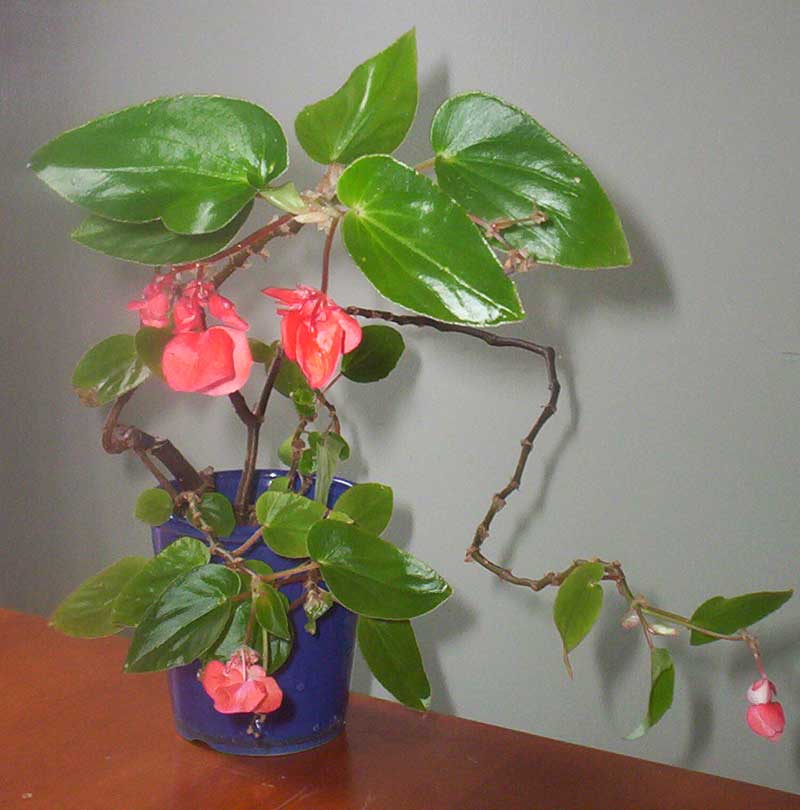

Press Begonia seeds onto the sterile potting mixture, but do not cover the seeds.
#Wax begonia plants full#
Start Begonia flower seeds indoors 10 - 12 weeks before last frost. Wax begonias are often thought of as a plant for shade, but most of today’s varieties grow well in full sun making this plant very versatile for gardens and landscaping. Begonia flower seed is delicate and the consistency of powder. In frost-free climates, these Begonias can overwinter and be reliable perennials if moisture is available and summer suns are not scalding. These little charmers grow 8 to 10 inches tall and bear pink, red, or white blooms atop either green or bronze foliage. Probably the most popular member of the family is commonly called wax begonia. They are known to be heat and drought tolerant as well. A large family of easy-care annual flowers, begonias come in a wide variety of shapes, sizes, and colors. Wax Begonias plants are especially good in shady areas where few other plants will bloom. Wax Begonias are wonderful bedding plants! The uniformity of their size and shape makes them perfect for mass plantings, and they are also great for containers and hanging baskets. They are very low maintenance and easy to grow from Begonia seeds. Begonia Semperflorens is an excellent choice for mass ground bed plantings in a mixture of sun and shade. The wax-leaf begonia (Begonia x semperflorens-cultorum) is a desirable blooming plant for Texas landscapes because they tolerate sun and shade as well as. It has an abundance of flowers throughout the summer with thick and waxy foliage. This wax Begonia has extremely gorgeous rose colored flowers and rich green leaves.

When frost threatens in the fall, bring them indoors and continue to enjoy their tropical appearance while the snow flies.Wax Begonia ( Begonia Semperflorens Rose) - Begonia seeds are very small, but they are also very rewarding to grow! Wax Begonias are prized as a summer bedding annual because they have continual blooms and uniformity in their size. Perhaps the easiest way to enjoy these flowers year round is to grow them in containers. If they do decline, replacement seedlings are cheap and easy to buy during the growing season.
Mine are heading into their third winter. While the plants are listed as tender annuals, they seem to keep growing indefinitely. That’s a small price to pay for flowers in January! The only real problem is that the spent flowers drop their petals on the floor where they must be swept or vacuumed away. Their flowers can be found in white, pink, or red. They sport glossy, waxy-looking leaves that can be either green, bronze, or maroon. This versatile type of begonia can be used as an annual in colder climates, a perennial in warmer climates, and even as a houseplant on your desk. As a bonus, the stem ends root readily in a cup of water. Wax begonias are a widely loved little plant. If they get too leggy, just pinch them back. Regular feeding keeps the flowers coming. Be sure to leave some space between the leaves and the glass to avoid burning the foliage. While they bloom in the shade outside, indoors a sunny window is best. While the water-retentive plants can go a while between waterings, they prefer to stay damp, especially when growing in full sun. Size the container to the plant, and use a soil-free potting mix. I was elated to discover that these carefree outdoor plants are just as easy to grow indoors. Happily, pests are usually not a problem-even the deer tend to leave them alone! Space them a foot apart in soil high in organic matter and keep the roots evenly moist. It’s true that they do well in our gardens, given light shade or (preferably filtered) sun. Wax begonias are more commonly considered summer annuals. Plants grow to a height of about six to twelve inches, and tend to flop, creating a solid mass of color, and even trailing over walls and container edges. Flowers have fleshy petals surrounding a bright yellow cluster of stamens. What plant thrives indoors, shrugs off low humidity, and blooms all winter in bold shades of white to pink to red? Surprise! It’s wax begonias!Īlso called fibrous begonias, these bedding plants have large, round succulent leaves in either lime green or a beautiful burgundy- or bronze-red.


 0 kommentar(er)
0 kommentar(er)
